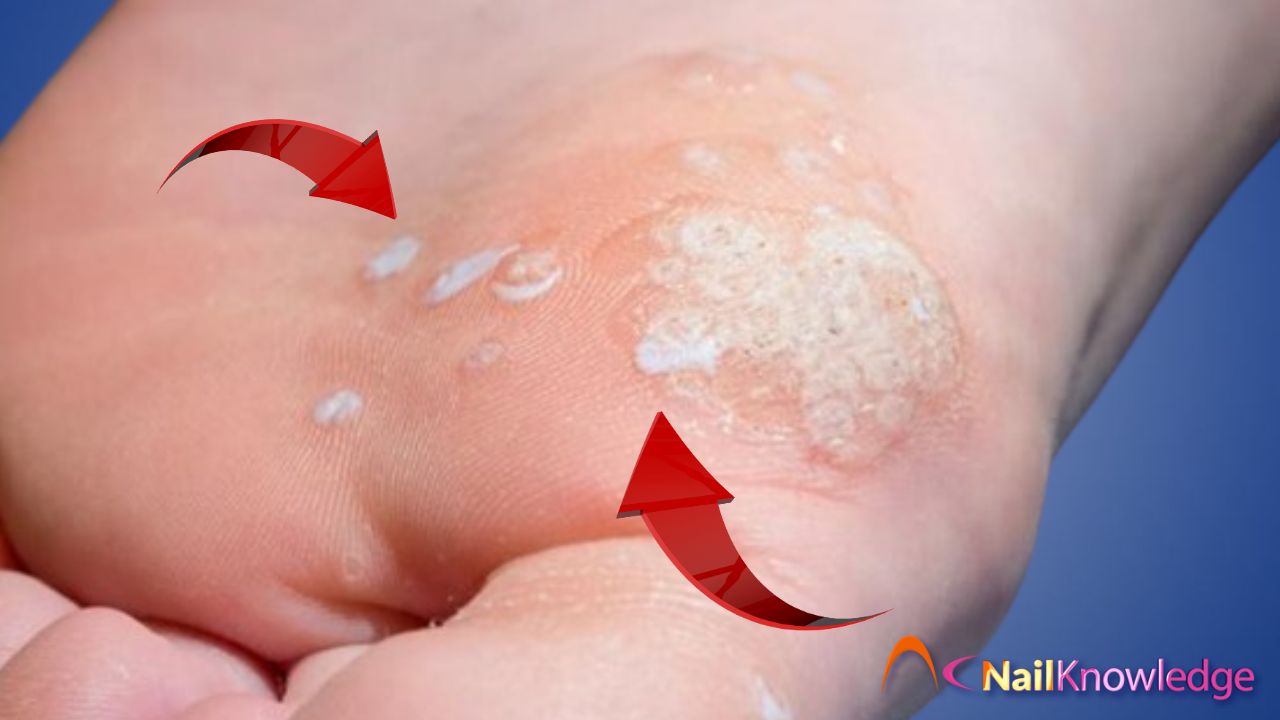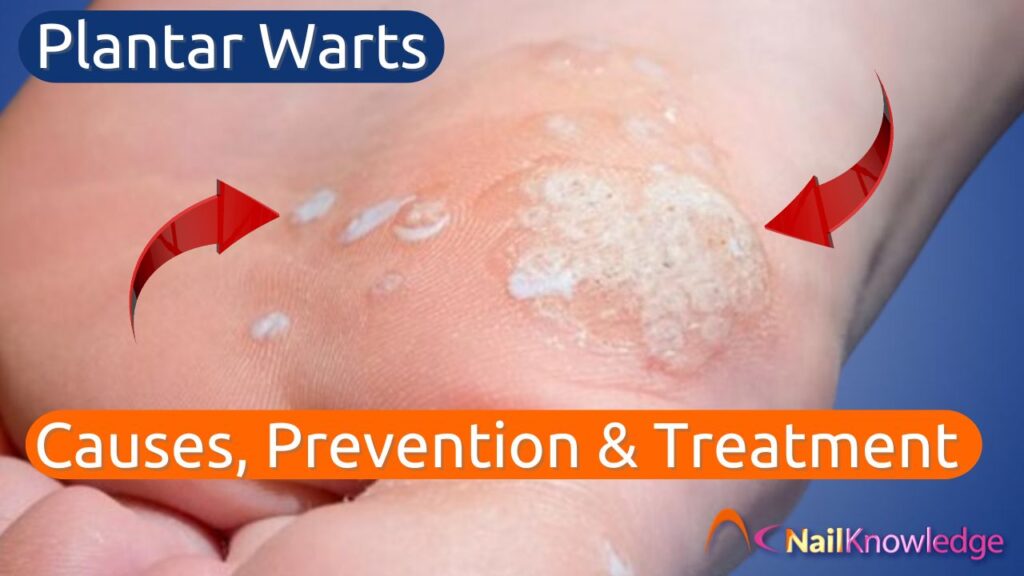Plantar warts, those annoying little bumps on the bottom of your feet, can turn even a short walk into an uncomfortable ordeal. If you’ve ever dealt with one, you know they’re not just a cosmetic issue. They’re a persistent problem that can mess with your comfort, confidence, and even your daily routine. But don’t worry! We’re diving deep into plantar warts, from what they are to how to kick them to the curb.
What Are Plantar Warts, and Why Do They Show Up?
Picture this: you’re walking barefoot around a pool or gym locker room, enjoying life, when a sneaky virus called human papillomavirus (HPV) decides to hitch a ride. That’s how plantar warts begin. HPV invades the skin through tiny cuts or abrasions, usually on the soles of your feet. The result? A small, rough, and often painful bump that feels like a pebble stuck in your shoe.
Plantar warts are unique because they grow inward due to the pressure of walking or standing. This inward growth makes them tricky to spot at first, but as they develop, they can cause discomfort, especially if they form on weight-bearing areas like the heel or ball of the foot. And here’s the kicker: they’re contagious. They spread through direct contact, so places like communal showers, pools, and gym floors are hotbeds for transmission.
Who’s Most Vulnerable to Foot Warts?
You might think anyone with feet is at risk, and you’re not wrong. But certain people are more likely to deal with these pesky growths.
- Barefoot Wanderers: Love walking around barefoot in public places? That’s like rolling out the red carpet for HPV.
- Weakened Immune Systems: If your immune system isn’t at its A-game—whether due to illness, stress, or other factors—you’re more vulnerable.
- Kids and Teens: Younger people are more prone to warts because their immune systems haven’t built up resistance to HPV.
- Athletes: Spending time in locker rooms and around communal showers? It’s a prime spot for picking up the virus.
Basically, if you’re not careful, plantar warts can sneak up on you when you least expect it.
What Do Plantar Warts Look and Feel Like?
How to tell if you’re dealing with a plantar wart? Here are some telltale signs:
- Texture: Rough, grainy, and uneven, like a cauliflower head.
- Color: Often flesh-toned but can have small black dots (tiny clotted blood vessels).
- Pain: They can hurt when you press on them or walk, especially on weight-bearing parts of your foot.
- Size: They can be tiny or grow into clusters called mosaic warts.
Think of them as uninvited guests that refuse to leave. You might not see them right away, but your feet will let you know something’s up.

Prevention: Your Feet’s Best Defence
Prevention is always better than cure, right? Luckily, there are simple ways to keep plantar warts at bay.
- Wear Shoes or Flip-Flops: Don’t give HPV an easy target. Always wear footwear inpublic places like pools and gyms.
- Keep Your Feet Dry: Warts love damp, moist environments. Dry your feet thoroughly, especially between your toes, and wear breathable socks.
- Don’t Share Personal Items: Sharing towels, socks, or shoes is like handing over an invitation to HPV. Just don’t do it.
- Practice Good Hygiene: Wash your feet regularly and exfoliate dead skin to reduce infection risks.
- Boost Your Immunity: A strong immune system can help your body fend off HPV before it causes trouble.
It’s like locking your front door, small actions that stop bigger problems.
How to Spot the Difference Between Plantar Warts and Other Foot Problems
Plantar warts often get mistaken for other foot conditions, like corns or calluses. So how do you tell them apart?
- Plantar Warts: Have black dots, hurt when you press them, and disrupt the natural lines of your skin.
- Corns and Calluses: Smooth and often form due to friction. They don’t usually have black dots or interrupt your skin’s texture.
Still unsure? If in doubt, consult a podiatrist—they’ll know exactly what you’re dealing with.
Treatment Options: How to Get Rid of Plantar Warts
Alright, let’s talk solutions. There’s no one-size-fits-all treatment for plantar warts, but here are some options to consider:
Over-the-Counter Treatments
- Salicylic Acid: This common treatment softens and peels away the infected skin layer by layer. It works, but it takes patience—expect to use it daily for weeks.
- Cryotherapy Kits: These freeze the wart, killing the tissue. They’re less powerful than professional options but can be effective for smaller warts.
Professional Treatments
- Cryotherapy: A podiatrist uses liquid nitrogen or nitrous oxide to freeze the wart. It’s quick, effective, and more intense than DIY kits.
- Laser Therapy: Lasers target and destroy the wart tissue. It’s a pricier option but highly effective for stubborn warts. Surgical Removal: For severe cases, a podiatrist can cut the wart out, but it’s usually a last resort.
Home Remedies
Some people swear by duct tape therapy (yes, duct tape!). The idea is to cover the wart, suffocating it and encouraging your immune system to kick in. While not scientifically proven, some folks find it helpful.
When to Seek Help from a Podiatrist
If your plantar wart isn’t responding to treatment, is spreading, or causing significant pain, it’s time to call in the experts. Podiatrists are the MVPs of foot care, and they’ll have the tools and knowledge to deal with even the most stubborn warts.
Why Plantar Warts Are a Big Deal for Nail Professionals
For nail professionals, understanding plantar warts is crucial. Spotting them early can prevent spread and show clients you care about their overall foot health, not just their pedicure. Plus, knowing when to refer someone to a podiatrist builds trust and credibility.
Keep Those Feet Wart-Free
Plantar warts may be small, but they can be a big pain, literally. By understanding how they form, how to prevent them, and how to treat them, you’re already a step ahead (pun intended!). Whether you’re dealing with one yourself or helping a client, knowledge is the key to staying wart-free and confident on your feet.
Let’s keep those feet healthy and happy!
Further Reading
Preventing the spread of plantar warts in nail salons


